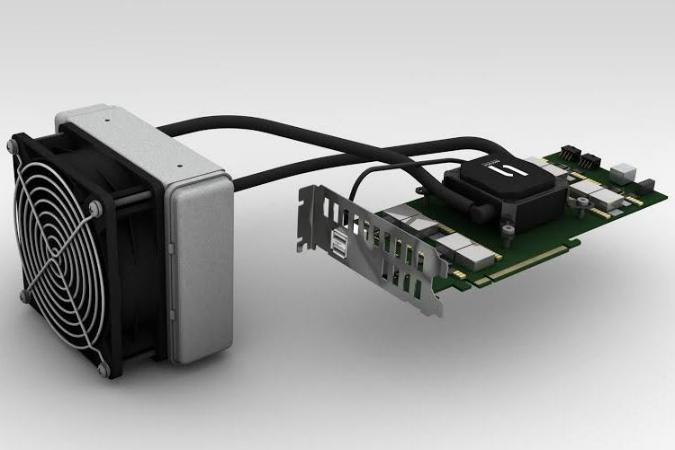
Bitcoin and crypto-currencies in general are one of the hottest, most maddening and mysterious topics out there in the tech world today. Some people have made quite a bit of money with Bitcoin however, and while the barrier to investment is quite high now (the current exchange rate is $622.31 as of this writing), there’s another way to get your hands on some Bitcoins.
You can mine them yourself, with the use of some very powerful computer hardware, like CoinTerra’s GSX I card.
The CoinTerra GSX I is a PCI-Express based card that’s got a GoldStrike ASIC processor mounted to it. Since the CoinTerra GSX I is a PCI-Express based card, you at home can slot this baby into your system, provided that you can fit it in your rig. Though you can mine altcoins with the use of consumer-grade hardware like high-end graphics cards, a CoinTerra rep told us that the GSX I can mine Bitcoins “900 times faster” than current high-end graphics cards, like the AMD Radeon R9 290X or the Nvidia GeForce GTX 780.
The CoinTerra GSX I ships with a CoolIT liquid cooler, and sports a trio of USB 2.0 ports. All your PC needs to power the CoinTerra GSX I is a power supply of 450 watts or greater.
The CoinTerra GSX I will ship this coming June and retails for $1,599. We’ll try our best to get our mitts on a review unit, and put its mining chops up against the best graphics cards that AMD and Nvidia have to offer at that time.
What do you think? Sound off in the comments below.


